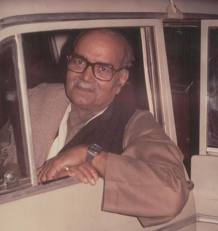
Prof. Rajendra Singh (29 January 1922 – 14 July 2003 ), popularly called Rajju Bhaiya
Bangalore January 29, 2013: Nation today remembers the 91st birth anneversary of a great social reformer, Prof Rajendra Sing. As a dedicated social worker, Prof Rajendra Sing, popularly known as Rajju Bhaiyya, joined Rashtriya Swayamsevak Sangh, headed the largest voluntary organisation as its 4th Sarasanghachalak, after Balasaheb Deoras.

Prof. Rajendra Singh (29 January 1922 – 14 July 2003 ), popularly called Rajju Bhaiya, was the fourth Sarsanghchalak of the Rashtriya Swayamsevak Sangh (RSS). He was chief of that organisation between 1994 and 2000.
He worked as a professor and head of the Department of Physics at Allahabad University but left to devote his life to the RSS in the mid-1960s.
Rajendra Singh was born on 29 January in either 1921 or 1922 in Bulandshahar, Uttar Pradesh, to Jwala Devi and Balbir Singh, when his father was posted there as a engineer.
Singh matriculated from Unnao. After that he was enrolled at the Modern School (New Delhi) for a brief period before moving to St Joseph’s College, Nainital. Progressing to Allahabad University, he obtained B.Sc. and M.Sc. degrees.
Singh was acknowledged as an exceptionally brilliant student by Sir C. V. Raman, the physicist and Nobel Prize-winner, when he was his examiner in M.Sc. He also offered Singh a fellowship for advanced research in nuclear physics.
He joined Allahabad University after majoring in Physics to teach Spectroscopy. He taught at the university for several years, where later he was appointed head of the Physics Department.:
Singh was also considered an expert in nuclear physics which was very rare those days in India. He was a very popular teacher of the subject, using simplicity and clear concepts.
Singh was active in the Quit India Movement of 1942 and it was during this time that he came in contact with the RSS. From then onwards the Sangh influenced his life. He resigned from his university post in 1966 and offered full time services to the RSS as a ‘prant pracharak’.
Beginning in Uttar Pradesh, Singh progressed to be the Sar Karyavaha (General Secretary) in the 1980s. In 1994, he was nominated to succeed Bala Saheb Deoras as RSS chief.[citation needed]
While in Uttar Pradesh, Singh worked with Lal Bahadur Shastri, Chandra Shekhar and V.P. Singh. Murali Manohar Joshi was also one of his best students.
Arguably Rajju Bhaiya’s term of six years was one of the most crucial for both Sangh and India. Rajju Bhaiyya shared an excellent rapport with political leaders cutting across ideological lines besides academicians, social workers and intellectuals.
1998 saw the pragmatic shift of Indian politics when the main opposition party, The Bharatiya Janata Party (BJP) scaled new heights by emerging as the largest party in the ruling National Democratic Alliance (NDA) coalition at the Centre. This was a crucial period for the RSS and its political wing BJP. The BJP and the RSS shared many common ideologies.
He abdicated the post of Sarsanghchalak on account of his failing health in February 2000 and nominated the K. S. Sudarshan for the post.[2]
During emergency he went underground and toured whole India. Singh was also responsible for organizing human rights convention presided by Justice VM Tarkunde in Delhi in 1976. He was also responsible for setting up friends of India Society International.
One of the most important beliefs of Singh was: “All people are basically nice. One should deal with every person by believing in his goodness. Anger, jealousy, etc. are the offshoots of his past experiences, which affect his behavior. Primarily every person is nice and everyone is reliable.”[8][dead link]
Like other Sarsanghchalaks he was a firm believer in the concept of swadeshi and empowering rural economy. Initiating the rural developmental activities, he had declared in 1995 that the utmost priority should be given in making the villages hunger-free, disease-free and educative. Today, there are over 100 villages where the rural development work done by swayamsevaks has inspired the people of surrounding villages and their experiments are being emulated by those people.
Addressing the Vijayadashami festival at Nagpur in 1995, Singh remembered Mohandas K. Gandhi and Lal Bahadur Shastri. He challenged the way in which the central government was working on fulfilling the dreams of these two statesmen.[citation needed]
Singh wanted to establish a memorial named after Bismil in Delhi, the capital of India.[citation needed] He died on 14 July 2003 at Kaushik Ashram in Pune, Maharashtra

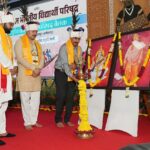
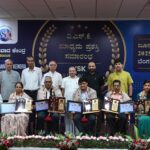
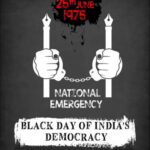
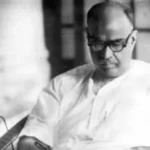

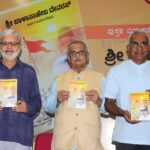
It is perhaps impossible to measure the great dimensions of Rajju Bhaiya. Though commanding universal regards, from the highest in the country to the lowest, he never allowed even slightest shred of air of self-importance to touch him. He was polite and always behaved like a very common man. The abstract instruments of man making process with their nuances were so subtle and sharp, often full of pleasant humour,that endeared him to the core.Any body who really came in to his contact got the indelible messages : let hierarchy and discipline be subordinated by synergy and Aatmeeyataa, and ,simultaneously,let authority be subordinated by influence.He was accessible by all, and answered queries very plainly.To him most important factor for degeneration in national life was inertia of good people, not really the activism of bad people.Aatma Vismarana, he often said, was the biggest factor that brought ignominy for the nation.In deed, Rajju Bhaiya’s limitless self was like an infinitely large mansion without walls and very high ceiling.